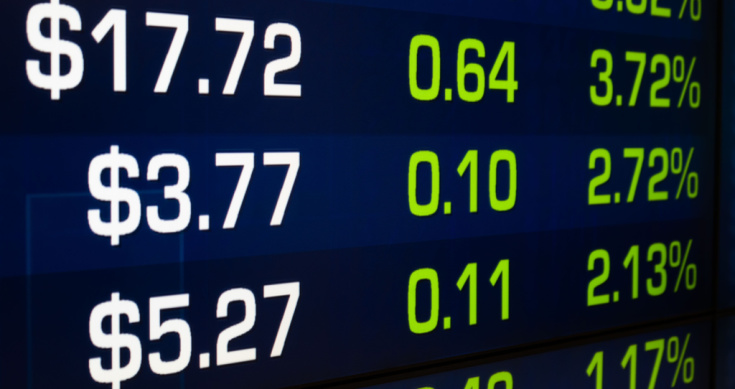• Reporting Season leaves the ASX to dance to the beat of its own drum – we are midway through
• Are opportunities reappearing in the Materials (mining) sector
• Australian market rose this week, there is little surprise that Utilities are amongst the weakest performers.
• Mid-caps reign supreme; the Market Darlings like SBM you, woulda, coulda, shoulda had
• The themes to look for; inverse oil exposure; Consumer Discretionary; Retirement and Food related are really powering the market
Economy and Indices
The Australian market was in the middle of Reporting Season this week. A lot of the market movements have come from company-specific news. With the strong influence from Australia’s listed companies it is of little surprise that Australia’s major trading partners played insignificant roles influencing the direction of Australia’s market this last month.
International markets rallied this week from Europe, US to Asian markets.
News:
– Late last week UAE’s energy minister said that OPEC was willing to co-operate on an output cut
– This week oil producers including Saudi Arabia, Russia, Qatar and Venezuela said they would freeze oil production at January levels if Iran and Iraq followed suit
Australian Market Correlations over the last month:
– US = Weak
– UK = Insignificant
– German = Insignificant
– Chinese = Weak
– Japan= Insignificant
– India= Insignificant
Sectors
Sectors on the ASX are a classification which is given to each listed company to describe the industry group they operate within.
The top three sectors this week were:
1. Energy (oil and gas)
Energy is a cyclical sector and its performance is often a function of the world prices for oil and gas commodities. However in the midst of Reporting Season, the largest shares in this sectors have been the driving forces behind this week’s rise.
Woodside (WPL) is the largest in this group and its reports were received well by the market this week, so too was Origin Energy (ORG) and Santos (STO).
It’s worth noting that most of the shares in this sector are down over 30% in the last year.
2. Consumer Discretionary (retail)
This sector is more evenly spread than most sectors on the ASX and provides a balanced view of the sector.
Harvey Norman (HVN), Dominos Pizza (DMP), Star Group (SGR), Crown Resorts (CWN) and Flight Center (FLT) all performed well this week.
3. Materials (mining)
Materials are dominated by BHP and RIO, together making up 44% of the Materials index (XMJ).
After a year of weak performances in both BHP and RIO’s share prices, the two have provided strong performances this week off the back of improving Iron Ore prices.
The strongest performers in the Materials sector over the last few weeks are the smaller gold companies, although most have fallen back considerably this week.
The Weakest sectors were:
1. Telecommunications
Telstra (TLS) dominates this sector with a staggering 78% weighting. It is fair to say that where TLS goes, the Telcos go.
While this sector has been the second strongest gains over the last years, it has also seen considerable consolidation with a number of Mergers and Acquisitions (‘M&A’). The sector is comprised of only four companies.
What is worth noting is that the smaller companies have out-performed Telstra by a considerable margins. Vocus (VOC) and TPG (TPM) are up 450% and 725%, respectively, over the last 5 years, This compares to TLS up 190% and Spark (SPK) up 250% over the same period.
2. Healthcare
The Healthcare sector in Australia is 44% CSL, so as CSL goes the Healthcares sector goes.
As CSL earns a large portion of their revenue from overseas sales, or in USD, this sector is also a proxy for the performance of the AUD. Healthcare has been the strongest sector on the ASX for the last 5 years which is a strong reflection on how dominate the performance of the AUD against the USD has been for the Australian economy.
The performance of Healthcares this week has been detracted Cochlear (COH) and CSL by both falling this week after strong increases earlier in the week.
3. Utilities
Utilities are 31% AGL Energy (AGL), so a strong performance in utilities means AGL had a good week.
Typically Utilities are also a ‘defensive’ sector. Sometimes this means the Utilities sector goes up as the overall market falls, but more often this just means the rest of the market falls more than Utilities fell in a down week.
As the Australian market rose this week, there is little surprise that Utilities are amongst the weakest performers.
Segments
Segments are the classifications given to companies of similar sizes for their market capitalisation (total company value by share price).
Within the ASX Top 200, the segments are:
– The 50 largest (‘Fifty Leaders’) and generally called the ‘blue-chip’;
– The next 50 companies (from 51 to 100th largest) are the ‘Mid-cap’ shares; and
– The last 100 of the Top 200 (from 101 to 200th) are the Small-caps’.
This week the Mid-Caps have considerably out-performed this week. This out-performance was helped along by these leading companies:
CIM, QAN, REA, TWE, ALL, FMG, TTS, HVN, DMP, SGR and CGF.
The Fifty Leaders provided the weakest performance this week, although only slightly below the rest of the indices.
As the Australian market is up this week, and that normally means the Top Fifty is also up, there is little to distinguish why the Top Fifty were only slightly slower, but for the aforementioned smaller mid-cap companies performing well.
Market Darlings:
These are the shares we all wish our portfolios were filled with – the leading shares of the leading groups on the ASX.
| Code | Description | Economic Sector | Annual Return | Rank |
| TRS | The Reject Shop | Consumer Discretionary | 117.74% | 19 |
| BAL | Bellamy’s Australia | Consumer Staples | 526.03% | 5 |
| BKL | Blackmores Limited | Consumer Staples | 324.48% | 9 |
| HUB | HUB24 Ltd | Financials | 335.16% | 8 |
| OVH | Onevue Holdings Ltd | Financials | 138.33% | 17 |
| RAP | Resapp Health Ltd | Health Care | 676.79% | 3 |
| SIQ | Smartgrp Corporation | Industrials | 188.82% | 15 |
| ADA | Adacel Technologies | Information Technology | 665.52% | 4 |
| SMA | SmartTrans Holdings | Information Technology | 375.40% | 7 |
| CAT | Catapult Grp Int Ltd | Information Technology | 321.05% | 10 |
| SMN | Structural Monitor. | Information Technology | 221.51% | 13 |
| SBM | St Barbara Limited | Materials | 754.76% | 1 |
| TND | Top End Minerals Ltd | Materials | 700.00% | 2 |
| BLK | Blackham Resources | Materials | 400.00% | 6 |
| RMS | Ramelius Resources | Materials | 240.91% | 11 |
| DCN | Dacian Gold Ltd | Materials | 238.50% | 12 |
| AJM | Altura Mining Ltd | Materials | 212.14% | 14 |
| MOY | Millennium Min Ltd | Materials | 141.67% | 16 |
| SAR | Saracen Mineral | Materials | 115.66% | 20 |
| SDA | Speedcast Int Ltd | Telecommunication Services | 129.84% | 18 |
Leading Market Themes
Technology companies, mostly software/‘cloud’ related and non-physical solutions, are providing the strongest returns on the ASX. A lot of these companies are small and mirco-caps and some are not even in the All Ords index (XAO).
‘Inverse Oil Exposure’ has continued to perform well. These are companies whose bottom line is positively impacted by lower oil prices. Examples are SYD, QAN and other transport related companies. SLK has been one of the best performers from this group and one small-cap to note is ZNZ who import, distribute and sell transport fuel.
Consumer Discretionary shares have continued to perform well, notably: professional services, auto companies, food, media and domestic entertainment companies. There are significantly more Consumer Discretionary shares in the Mid-Cap index (XMD) than the Top 50 (XFL) which has helped the Mid-Caps to continue to provide strong returns over the last six months. A leading sub-group are a mix of ‘smart media’ companies such as APO, OML, QMS and REA.
Retirement related services also continue on a steady rise. These shares range from retirement homes, healthcare facilities and ageing services and technologies. A notable correlation within the Healthcare sector are the companies providing services and equipment are leading this group higher.
Food related producers/distributors are also performing well although are only represented by small market capitalised companies. The leaders of this group have a common thread of selling in to China and have been providing a proxy for food sales into China.









